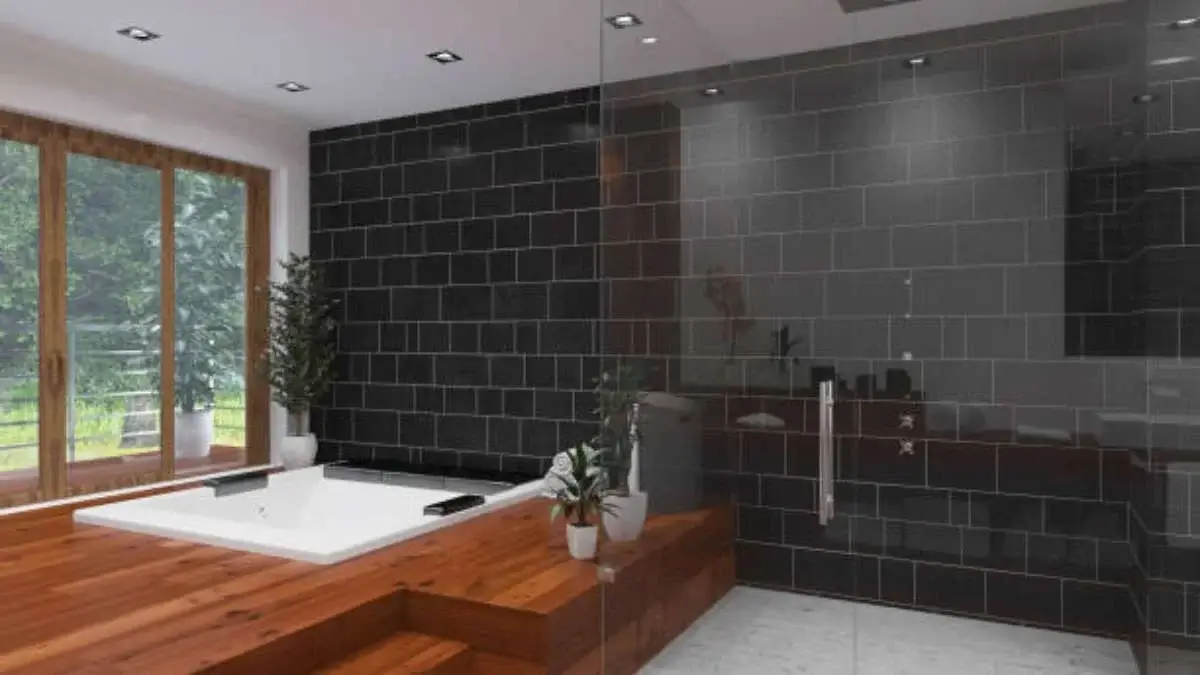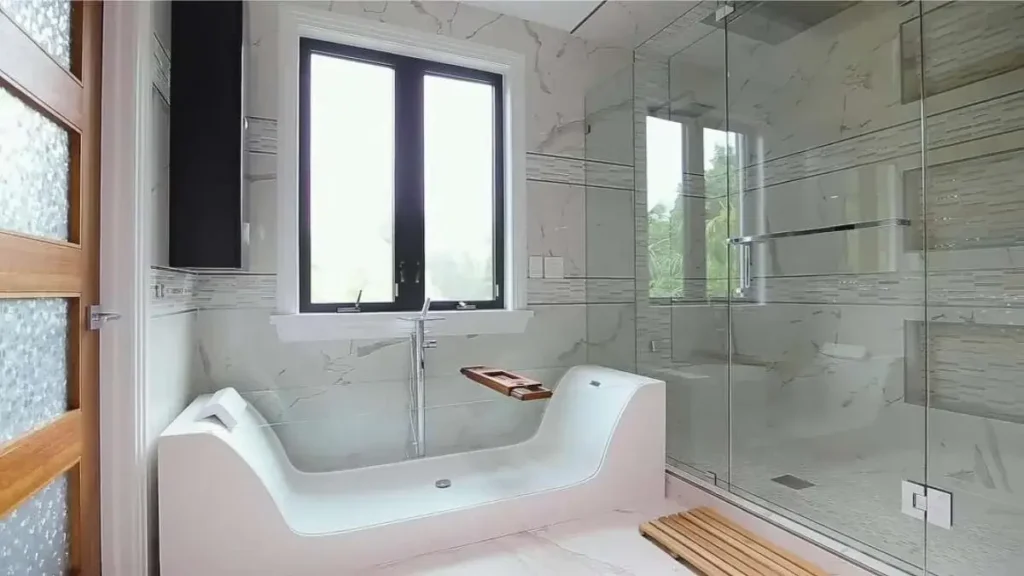HOME IMPROVEMENT
Tub-to-Shower Conversions: What to Consider Before Making the Switch

Introduction: The Growing Popularity of Tub-to-Shower Conversions
As modern lifestyles evolve, so do our bathroom preferences. Tub-to-shower conversions have become increasingly popular as homeowners seek to create more functional and accessible spaces. This trend reflects a shift away from traditional bathtubs in favor of showers that offer convenience, space-saving benefits, and a modern aesthetic. However, converting a tub into a shower is a significant remodeling project that requires careful planning and consideration. In this article, we’ll explore the key factors to think about before making the switch, ensuring that your tub-to-shower conversion meets your needs and enhances the value of your home.
Table of Contents
Assessing Your Needs and Lifestyle
1. Understanding Your Bathroom Habits
Before deciding on a tub-to-shower conversion, it’s essential to evaluate how you use your bathroom and what you want to achieve with the remodel.
- Daily Routine: Consider your daily routine and how a shower might better fit your lifestyle. If you rarely use your bathtub and prefer quick showers, converting the tub could improve the functionality of your bathroom.
- Family Considerations: If you have young children or plan to in the future, a bathtub might still be a necessity. However, if your household consists primarily of adults or older children, a shower may be more practical.
2. Future-Proofing Your Bathroom
When remodeling, it’s important to think about how your bathroom will serve you in the years to come.
- Aging in Place: A walk-in shower with low thresholds or no threshold at all can make your bathroom more accessible as you age. Features like grab bars, non-slip flooring, and a built-in bench can further enhance safety and comfort.
- Resale Value: While a shower may suit your current needs, consider how it might affect the resale value of your home. In general, it’s advisable to have at least one bathtub in the house, particularly if you’re targeting families as potential buyers.
Planning the Layout and Design
3. Making the Most of Available Space
One of the primary benefits of a tub-to-shower conversion is the opportunity to maximize space in your bathroom. However, it’s crucial to plan the layout carefully.
- Shower Size and Shape: Depending on the size of your bathroom, you may opt for a spacious, rectangular shower or a more compact, corner unit. Ensure that the shower size complements the overall layout and allows for comfortable movement within the bathroom.
- Placement Considerations: Think about where the new shower will be located. In many cases, it makes sense to place the shower where the tub currently resides, as this minimizes plumbing changes and reduces costs. However, you may want to explore alternative placements if it better suits your design vision.
4. Choosing the Right Shower Enclosure
The shower enclosure is a central element of your new bathroom design, so choose one that aligns with your style and functional needs.
- Glass Enclosures: Frameless glass enclosures are a popular choice for modern showers. They create an open, airy feel and allow natural light to flow through the space. Frameless designs also reduce visual clutter and make the bathroom feel larger.
- Sliding vs. Hinged Doors: Sliding doors are ideal for smaller bathrooms where space is limited, as they don’t require additional clearance to open. Hinged doors, on the other hand, offer a more traditional look and can be easier to clean, depending on the design.
- Curbless Showers: For a sleek, contemporary look, consider a curbless shower, where the floor of the shower is flush with the rest of the bathroom. This design not only enhances accessibility but also adds a minimalist, modern aesthetic.

Material Selection and Waterproofing
5. Choosing Durable and Stylish Materials
Material selection is critical in ensuring that your new shower is both durable and visually appealing.
- Tile Choices: Tile is a versatile and popular choice for shower walls and floors. Porcelain and ceramic tiles are durable, water-resistant, and available in a wide range of colors and patterns. For a more luxurious look, consider natural stone, though it requires more maintenance.
- Flooring Options: The shower floor should be slip-resistant and easy to clean. Mosaic tiles are a great choice as they offer good traction and can be arranged in intricate patterns. Pebble tiles are another option, providing a natural, spa-like feel while also being slip-resistant.
- Accent Materials: Consider adding accent materials like glass tiles or metallic finishes to create visual interest and break up large expanses of tile. These accents can be used in niches, borders, or as feature walls within the shower.
6. Ensuring Proper Waterproofing
Waterproofing is a crucial aspect of any bathroom remodel, particularly in areas as wet as a shower.
- Waterproof Membranes: Install waterproof membranes behind the shower walls and under the floor tiles to prevent water from seeping into the subfloor and walls. This layer of protection is essential in preventing mold, mildew, and structural damage.
- Grout and Sealant: Choose a high-quality, mold-resistant grout for the tiles, and ensure that all seams are sealed with waterproof caulk. Regularly maintaining these seals will prolong the life of your shower and prevent water damage.
Enhancing Functionality and Comfort
7. Adding Storage Solutions
Storage is often overlooked in bathroom design, but it’s essential for maintaining a clutter-free space.
- Built-In Niches: Incorporate built-in niches into the shower walls to store shampoo, soap, and other essentials. These niches keep products within easy reach while maintaining a clean, streamlined look.
- Shower Benches: If space allows, consider adding a built-in bench to your shower. A bench provides a convenient place to sit or to rest toiletries, and it can also enhance accessibility for users who need a place to sit while showering.
- Hooks and Shelves: Additional hooks and shelves outside the shower area can provide storage for towels, robes, and other bathroom items, helping to keep the space organized.
8. Integrating Modern Shower Features
To truly upgrade your bathroom, consider integrating modern shower features that enhance comfort and luxury.
- Rainfall Showerheads: A rainfall showerhead provides a luxurious, spa-like experience, with water cascading down in a gentle, even flow. This type of showerhead is often larger than standard models and can be installed overhead for a dramatic effect.
- Multiple Showerheads: For a more customizable shower experience, consider installing multiple showerheads, such as a combination of a handheld showerhead and a fixed one. This setup allows for greater flexibility and convenience.
- Body Jets and Steam Showers: For the ultimate in relaxation, body jets can be installed in the walls to provide a full-body massage while showering. Steam showers, which create a sauna-like environment, are another option for those looking to create a wellness retreat at home.
Budgeting and Professional Guidance
9. Setting a Realistic Budget
A tub-to-shower conversion can range from a simple swap to a complete bathroom overhaul, so it’s important to establish a clear budget.
- Cost Considerations: Factors that influence the cost of the conversion include the size and complexity of the shower, the materials chosen, and whether any plumbing changes are necessary. Be sure to factor in additional costs for features like custom enclosures, luxury fixtures, and professional installation.
- Contingency Fund: Always set aside a contingency fund of about 10-20% of your budget to cover unexpected expenses, such as hidden water damage or additional plumbing work. This ensures that your project can be completed without financial strain.
10. Consulting with Professionals
Given the complexity of a tub-to-shower conversion, it’s often wise to consult with professionals to ensure the project is executed smoothly.
- Hiring a Contractor: A skilled tub-to-shower conversion contractor can help you navigate the entire process, from initial design to final installation. They’ll ensure that the work meets building codes and that all elements are properly installed and waterproofed.
- Design Assistance: If you’re unsure about the best layout or material choices, consider working with a bathroom designer. They can provide valuable insights and help you create a space that is both functional and aesthetically pleasing.
Conclusion: Making an Informed Decision
A tub-to-shower conversion is a significant remodeling project that can transform your bathroom into a more functional and modern space. By carefully considering your needs, planning the layout and design, choosing the right materials, and consulting with professionals, you can ensure that your conversion meets your expectations and adds lasting value to your home. Whether you’re looking to create a sleek, contemporary bathroom or simply need a more accessible shower, taking the time to plan your project thoroughly will result in a space that is both beautiful and practical for years to come.
-

 GENERAL2 months ago
GENERAL2 months agoUncovering the World of кинокрадко: The Dark Side of Film Piracy
-

 GENERAL1 month ago
GENERAL1 month agoUnveiling the Art of преводсч: How Translators Bridge Language Barriers
-

 YOGA1 year ago
YOGA1 year ago4 Person Yoga Poses for Beginners
-

 GENERAL2 months ago
GENERAL2 months agoThe Journey of iamnobody89757: From Anonymous User to Internet Sensation


























